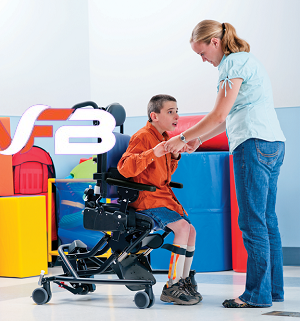Mobility support is essential for individuals facing challenges in moving freely due to age, injury, or medical conditions. The use of mobility aids provides independence, safety, and comfort to those requiring assistance with their daily activities. Over the years, innovations in assisted movement have expanded the variety of mobility aids available, allowing people to choose the most suitable option based on their specific needs. In this comprehensive guide, we explore the various types of mobility aids and highlight the latest advancements in assisted movement technology.
Why Mobility Support Matters
Mobility limitations can significantly impact an individual’s quality of life. The inability to move independently may lead to isolation, increased dependency, and a decline in both physical and mental well-being. By using mobility aids, individuals regain their freedom to move and perform everyday tasks. These aids not only enhance physical movement but also offer emotional support by fostering a sense of autonomy.
Selecting the right mobility aid can transform a person’s life, allowing them to participate more fully in activities, social interactions, and other aspects of daily living. Understanding the range of options and innovations in assisted movement is key to finding the best solution for each individual.
Traditional Mobility Aids
There are many traditional mobility aids available that provide essential support for those who need assistance. Several frequently used types are as follows:
1. Canes and Walking Sticks
Canes and walking sticks are often the first step for individuals who require assistance with balance and stability. These aids offer light support for those who can walk but need help to maintain balance. Available in a variety of materials, designs, and styles, canes can be customised to suit personal preferences. Some canes even feature ergonomic grips or foldable designs for added convenience.
2. Rollators and Walkers
Rollators and walkers provide more substantial support for individuals who need extra stability while walking. Walkers are typically frame-like devices that require the user to lift the device slightly with each step, offering firm support for those with limited mobility. Rollators, on the other hand, are equipped with wheels, making it easier to maneuver without the need to lift. Rollators often feature seats, allowing users to rest during extended outings. These aids are ideal for individuals who require more robust support but still wish to remain active.
3. Crutches
Crutches are used for individuals who need to take weight off an injured leg or foot. They are designed to support a person’s body weight through their arms and shoulders. Crutches come in two main types: axillary (underarm) and forearm crutches. Axillary crutches are typically used for short-term injuries, while forearm crutches are ideal for long-term use due to their comfort and control.
4. Wheelchairs
Wheelchairs are crucial for individuals who are unable to walk or stand for extended periods. Manual wheelchairs are propelled by the user or a caregiver, while power wheelchairs are motorized, allowing the user to move without physical exertion. Wheelchairs offer freedom and independence, especially for those with severe mobility impairments.
5. Mobility Scooters
Mobility scooters provide an excellent option for those who can sit upright but have difficulty walking long distances. Scooters are battery-powered and designed for outdoor use, offering independence in navigating parks, malls, and other public spaces. Some scooters are foldable, making them convenient for travel.
Innovations in Mobility Assistance
As technology advances, so too do the tools available for assisted movement. Modern mobility aids incorporate innovative features that make them more efficient, user-friendly, and adaptable to a wider range of needs. Among the most remarkable innovations in this area are:
1. Smart Canes
Smart canes are a modern twist on the traditional walking stick. Equipped with sensors, smart canes can detect obstacles and provide feedback to the user, helping them avoid hazards. Some smart canes also connect to mobile apps, allowing users to monitor their steps and mobility patterns over time. These devices are particularly useful for individuals with visual impairments.
2. Exoskeletons
Exoskeletons are wearable devices that assist individuals with walking or standing. These high-tech suits are designed to provide support and enhance movement for people with spinal cord injuries, multiple sclerosis, or other conditions that impair mobility. While exoskeletons are still relatively new, they offer significant potential for improving mobility and independence in the future.
3. Power-Assisted Wheelchairs
Traditional power wheelchairs have been a game-changer for individuals with mobility challenges, but recent advancements have made them even more effective. Power-assisted wheelchairs feature sophisticated motors and controls that make movement smoother and more intuitive. Some models also come with advanced seating systems that can tilt, recline, or adjust to prevent pressure sores, providing greater comfort and versatility.
4. Mobility-Tracking Devices
Wearable technology is making its way into the mobility aid sector. Devices that track a user’s movement, posture, and balance can provide valuable data for both the user and healthcare providers. This information helps adjust therapy, improve movement techniques, and monitor progress over time. Mobility-tracking devices are often used in conjunction with other aids, such as walkers or canes.
5. Robotic Walkers
Robotic walkers are an emerging technology designed to offer increased stability and safety. These walkers are equipped with sensors and motors that help guide the user, ensuring a smooth and stable walking experience. Robotic walkers can also detect obstacles, navigate changes in terrain, and assist with standing or sitting transitions, making them ideal for individuals with limited strength or balance.
Conclusion
Mobility aids, both traditional and modern, offer essential support for individuals facing movement challenges. Whether through the use of canes, walkers, wheelchairs, or innovative devices like exoskeletons and robotic walkers, the goal is to enhance independence, safety, and quality of life. As technology continues to evolve, the future of mobility assistance holds exciting possibilities, ensuring that individuals with mobility limitations can live more active and fulfilling lives.












Leave a Reply